Cities: Skylines is probably the most comprehensive and perhaps even the most popular city planning simulator of the current era. Whilst Sim City is possibly still a more famous brand, its last few haphazard releases have resulted in Paradox Interactive gaining a stranglehold on both the PC and console market. Not satisfied by owning just the digital market, Cities: Skylines: The Board Game is now available, with help from Kosmos Games and The Rise and Fall of Anvalor designer Rustan Hakansson.
Cities: Skylines :The Board Game is a fairly light and entirely cooperative experience that supports from two to four players, and can be configured as either a simple game with relatively few rules to a more complex game that features the full plethora of possibilities. As a cooperative experience, the players will be judged against a table that defines whether their city is anything from “Dying” to “Heavenly.”
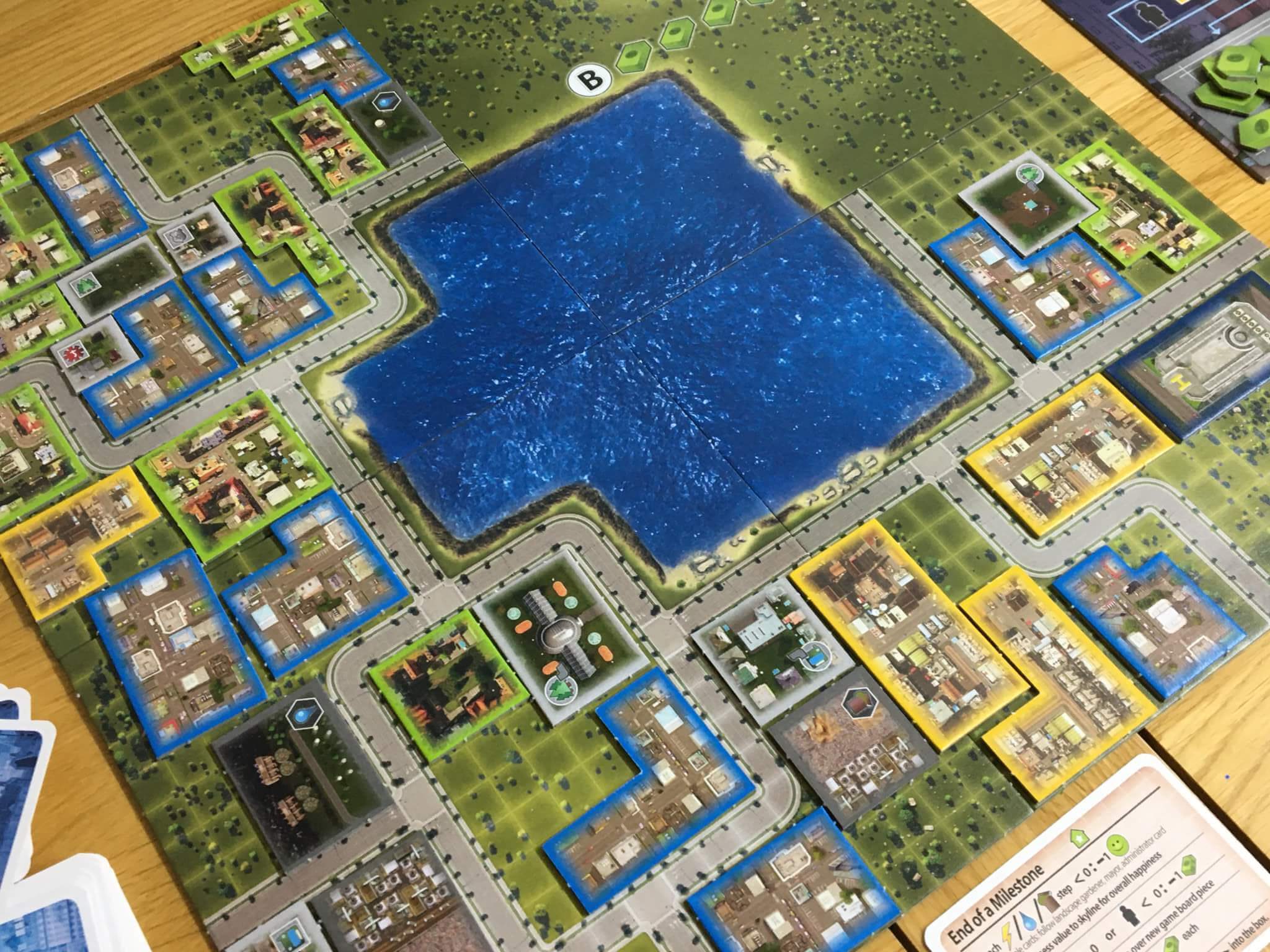
Before I go on, let me say one thing; Cities: Skylines: The Board Game can be extremely unforgiving, and like many cooperative games, it is, at best, a tough experience. For me, that’s fine, since it replicates the challenges of the actual video game. If you invest early in too much infrastructure, you may run out of money, but fail to do so, and you’ll inevitably end up with an unhappy populace.
The game itself is split into milestones and there will be one milestone for each of the board pieces used during the game. Players can choose to use any of the boards that are included in the box, in any way they like. However, there are a handful of pre-built scenarios that help novice players get up to speed with the basic rules before including some of the more complex ones such as Policies, Role Cards and News articles.
Each section of the board is double sided, with an undeveloped side showing just the terrain and any water, and the other side showing a network of roads that splits the board into Districts. Every area that is fully encompassed by road is considered to be a District, and there are numerous features in the game that refer to Districts — in fact, to end a milestone, every District in the game must have at least one building in it (and to end the game, each district must have at least two buildings.)
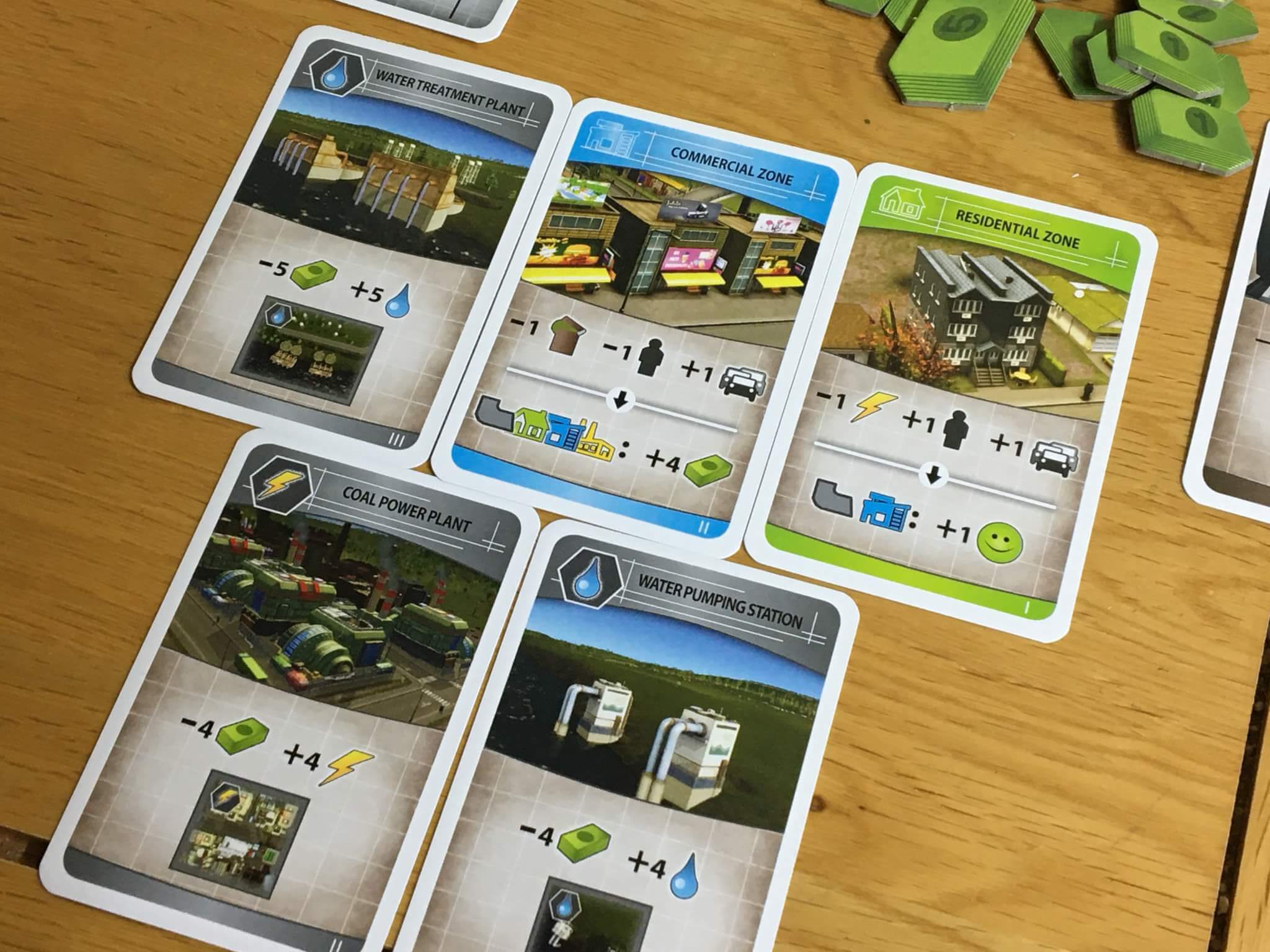
Whenever a board tile is flipped over, the players must spend cash from their collective fund, which usually begins with twelve dollars in it, but it can dwindle very rapidly. Even the very first board section must be chosen and paid for, which can mean that players actually begin the game with only eight or nine dollars.
Starting cards will then be drawn from the first deck, with more or less cards being drawn at lower or higher player counts. If Role Cards are being used, each player will draw two and choose one. Each of the other expansions is simply shuffled into the relevant deck of cards — with the Policies and News cards being shuffled into the level two and three decks of cards.
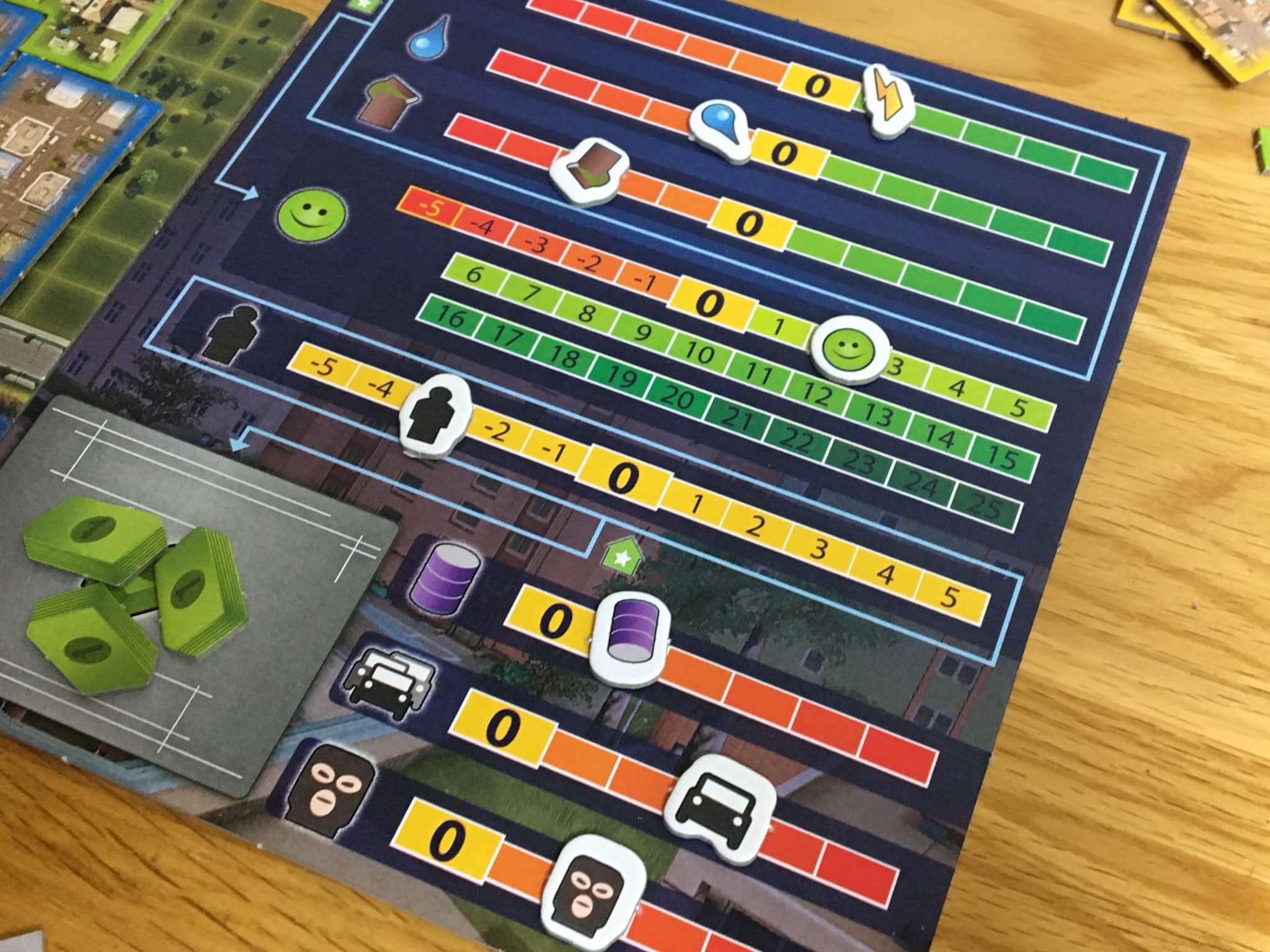
I should mention at this point that whenever cards are to be drawn after the initial draw, players can choose which pile to take them from. Level two and three cards are usually more powerful than those in the level one pile, but they are also more expensive, and/or will have more challenging effects on your city. Choosing a level three card early can lead to a powerful advantage, but it may also result in having a dead card in your hand, which is something I’ll talk about later.
In addition to money, the players must also manage the Administration Board. This board features eight separate tracks that seem a little daunting at first, but work out to be more straightforward than you think. The top three tracks represent your city’s power, water and garbage capacity; which have a direct effect on happiness, the fourth track, at the end of each milestone. In short, the deficit you have in each of these areas will reduce happiness by the equivalent amount.
Below the happiness bar is employment, and players will want to keep this as close to zero as possible. Zero represents the optimum balance between excess workers (unemployment) and a job shortage. When a milestone ends, any value above or below zero must be paid for in cash, costing the city one dollar per worker that is either over or under zero. The final three tracks (pollution, traffic and crime) have no direct effect on happiness, but players simply cannot use cards that would cause any of these tracks to exceed the maximum.
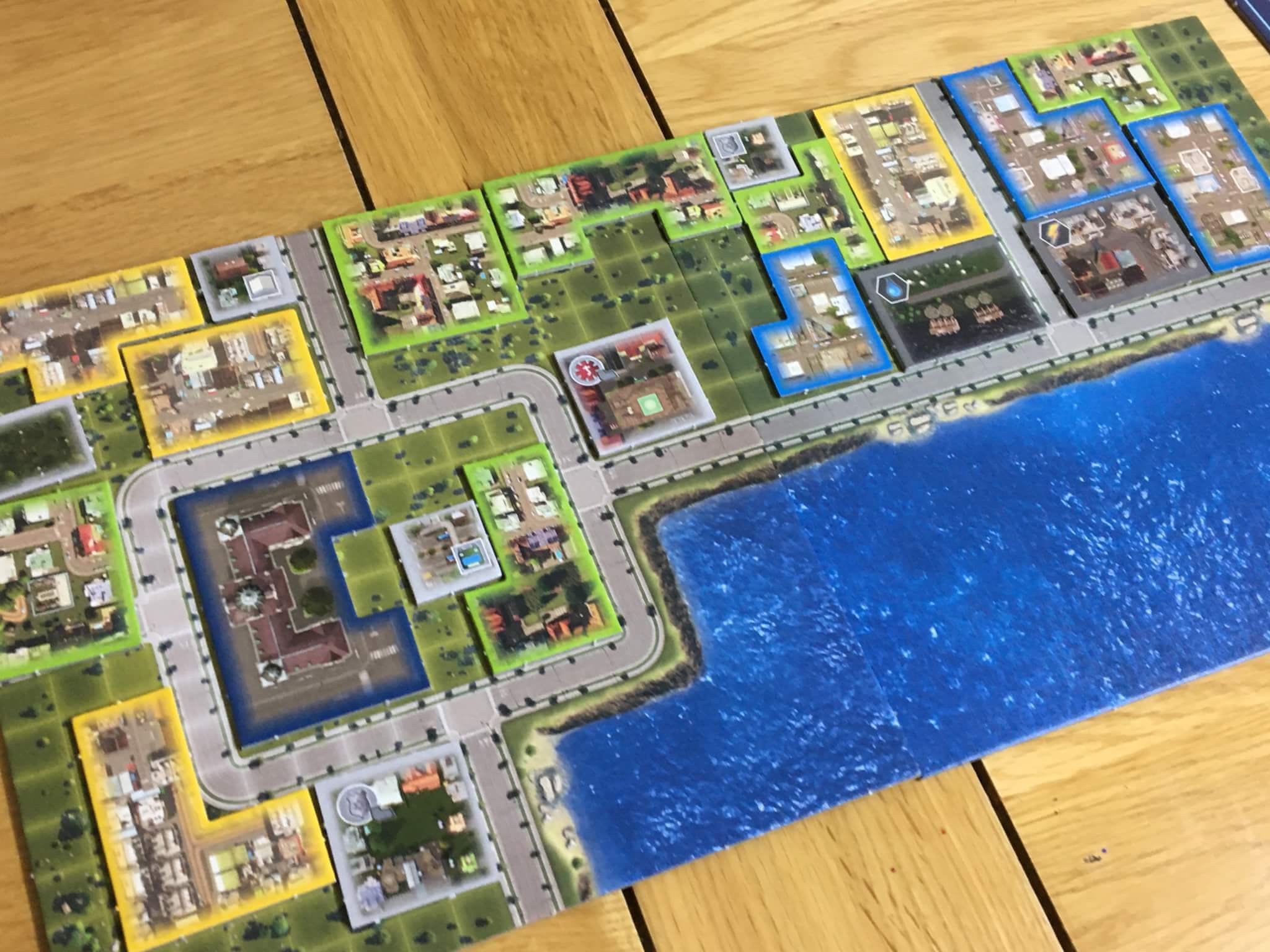
I’ve already talked a lot about cards, and that’s because each player turn is driven by them. Players can choose one of three actions, which are to play a card, exchange cards or to end the current milestone. The vast majority of the time, the player will be choosing a card from their hand and playing it, and more often than not, the card will be a construction card that places a new building onto the board and affects the Administration Board accordingly.
As an example, you may play a residential card, which will usually have no cost in money. Instead, it might raise the workforce by one, and consume one water and one electricity — which will then be adjusted on the board accordingly. Secondarily, the card might have a conditional benefit, such as when played next to a medical centre, it might gain you two dollars, or when played next to a park, two happiness.
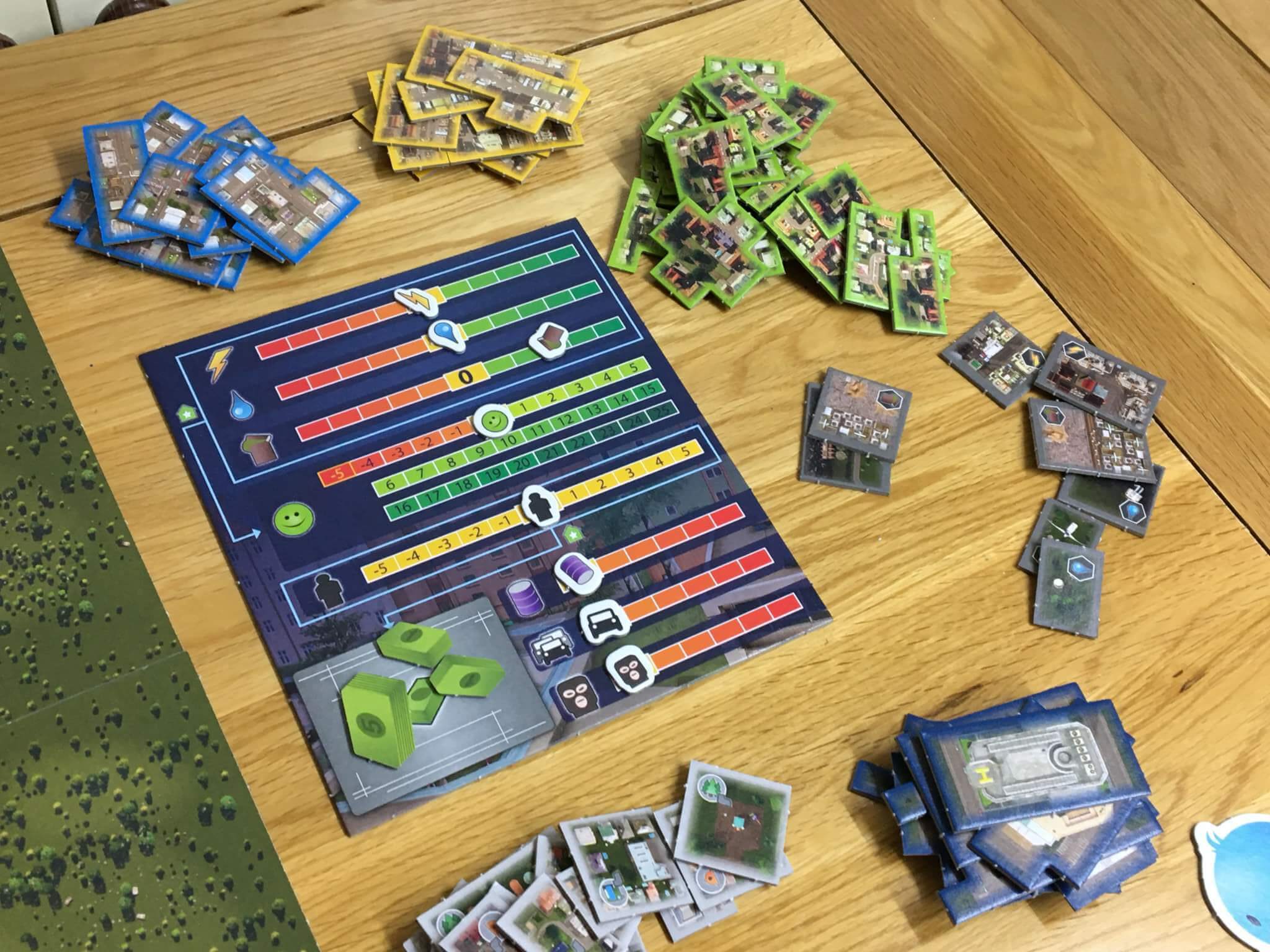
The real meat of Cities: Skylines:The Board Game is in planning each turn so that it synergises in the best possible way. One player might be holding the only industrial zone card, whilst another might be able to generate several money if they can place a building in the same District, but before that card can be placed to maximum effect, perhaps another building needs to be constructed.
By maximising the potential in their hand by working together, players are sure to raise the happiness of the Administration board to a level that each one is happy with. As long as the requirements for power, water and garbage disposal are in hand, that’s a good time to be choose the option to end the milestone.
At this point, happiness (adjusted by any modifiers such as the tracks or the abilities on a Role Card) will be added to the overall happiness tracker, which is a cool model of a skyscraper. At the end of the final milestone, the score on this skyscraper is compared against the table in the manual, deciding your success (or failure) as Town Mayor’s. Achieving more than 30 points is fairly challenging, whilst not much over 40 is my best score so far.
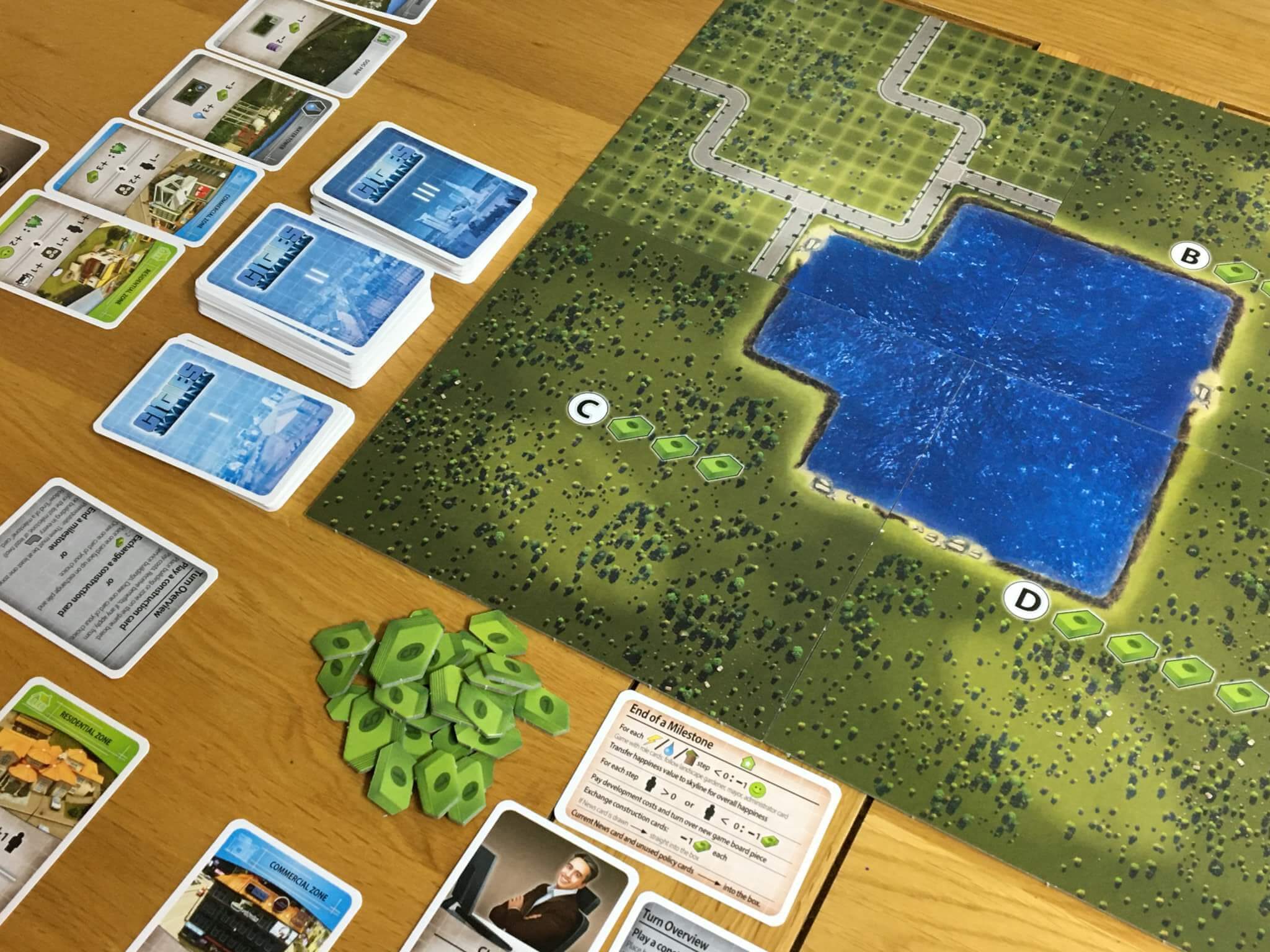
Clearly because it is cooperative (and due to the nature of how it plays) Cities: Skylines:The Board Game is an excellent candidate for solo play and one of the things I like most about it is how it feels like a proper town planning game. I love both Quadropolis and Suburbia for their mechanics and gameplay, but both feel quite abstract by comparison to Cities: Skylines:The Board Game.
As I mentioned right at the beginning, this is a hard game by any measure, but the News cards introduce further restrictions on the players when drawn. These cards usually last for the remainder of the milestone and will cause specific negative effects, like increasing the cost of building or increasing crime. Policies, to some extent, balance this the other way, and can be played like a construction card for an immediate benefit such as a reduction in pollution.

Whilst I’ve mentioned that players can either play construction cards or end the milestone in some detail, the third action players can use is to swap cards. Each turn, a player will draw a new card anyway, but will often find themselves with a hand of five cards that are either no use or impossible to play. This is a problem, because to swap a card, it must be discarded into a face up pile, then one dollar is paid to draw a single new card. Personally, in a game with such a tight economy and no way to control the luck of the draw, this is a tough pill to swallow.
When a new milestone begins, players are free to swap as many cards as they like for as many new cards as they want in the same way, but again each card must be paid for with a dollar. In most games I’ve had, it’s been impossible to swap more than one or two cards in the whole game and yet more often than not, the game will grind to a halt because at least one player is holding five bad cards. To counter this, I have occasionally introduced a house rule that allows players to swap any number of cards at the end of a milestone for free, but to maintain the normal rules during normal play.
If you enjoy the Cities: Skylines video game and are curious about light to midweight board games, then Cities: Skylines: The Board Game does an excellent job of representing its digital sibling. It looks the part and it feels like a city building game, but more importantly, it has a lot of the same challenges that make the video game so much fun. Balancing the desire to expand with the need to manage your Administration Board is front and centre, and the card play, whilst occasionally frustrating, is a fast and clever way to drive the game forward.
You can purchase Cities Skylines: The Board Game on Amazon.
Love both video games and board games? Here’s our list of some fantastic crossover games.
